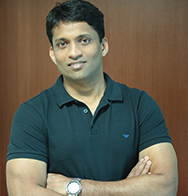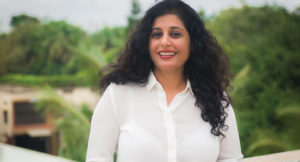With over 5 million users and two lakh paid subscribers in the last eight months, BYJU’s Classes is innovating the way learning happens in India.

It is often said, what you learn, and how you learn as a child, shapes who you choose to become when you grow older. In Byju Raveendran’s case, the words couldn’t be truer. BYJU’s Classes (BYJU), which has been grabbing eyeballs with its front page ads on mainstream tabloids and aggressive TV advertising, is sending a loud and clear message to every individual out there; that true learning comes not from rote learning or fear of exams, but by learning for the interest of it.
Eventually, this became BYJU’s vision as well. With 120 teachers on the platform, five million users on board and over two lakh paid subscribers on the platform in the last eight months, BYJU’s has, in a way, made its way to the primary ranks of the Ed-tech industry in India.
But, what led to such traction in just five years of founding?
“The venture was born out of the need for delivering high quality, engaging and accessible education to all,” he begins.
Explaining further, he says, even though India has the largest K12 education system in the world, with over 260 million enrolments, it has been consistently ranked low in all global education assessments because of three core issues; lack of access to good education, lack of personalised learning, and rote learning driven by fear of exams rather than love for learning. “There is a glaring gap between how something is learnt and can be learnt. Hence, the goal was to reinvent how to teach a concept, and innovate the format in which it is presented,” he shares.
Raveendran (who got 100 percent in the CAT exam), the man behind this venture, ignited his entrepreneurial streak by initially training students for CAT. Then, riding on the belief that there lay a similar opportunity in the K12 segment, he expanded his reach, and his team began developing products for students from Grade 4 to Grade 12 as well.
Re-altering the foundation
The key challenge for Raveendran and his team lay in changing the way students learn. As he pointed out earlier, students were trained to solve questions, but not encouraged to find problems. “Ideally, students should take up the initiative of learning on their own, while parents and teachers should take up supportive roles,” asserts Raveendran.
So, how did they turn it around? “By allowing them to experience the product,” he candidly puts. The team went with the belief that once the children see how fun and engaging learning can be, they can start learning on their own. Added to this, technology penetration would also add to accessibility of such self-learning content.
A similar belief led them to sign their first few customers on board. “For most Indians, education is still the best way to make it big, so if we can help millions of students learn better, that will create a huge impact,” he states.
Style of Functioning
Typically, the teachers at BYJU’s have significant academic achievements and can think beyond a concept, to be able to answer not just ‘what’ of a question, but also the ‘why’, ‘where’ and ‘how’ of it. “While the teacher need not necessarily have years of industry experience, it’s important that they have strong fundamentals, connect with the student, and be sought as a mentor or guide by the learner,” states Raveendran.
In other words, the goal of every one of the 120 teachers currently on board is to make learning fun and personalised (with technology and data support from the backend), and have the best of them made accessible to every student.
While the technology team at byju’s brainstorms on gaming-related or other creative ideas to create a unique learning methodology, the in-house band (yes, you read that right), creates the music for each and every video.
![]()
Sourcing external capital
Like in the case of a chosen few, Raveendran didn’t have to actively seek external funding because they were already in a good place in terms of growth and demand. “When you’ve landed the right model, revenues are steadily increasing and your customer retention is higher, you are moving in the right direction, and investors automatically see the feasibility of investing in the business,” he declares.
Thus far, BYJU’s has raised a Series A of US $40 million from T.V. Mohandas Pai and Dr. Ranjan Pai of Aarin Capital and Sequoia, and in May 2016, raised a Series B of US $75 million from Belgium-based Sofina Capital and existing investor, Sequoia Capital. While funds from the initial rounds were channelised towards driving initial business, the funds from the latest round is being spent on developing more products, expanding into international markets, introducing courses in newer languages and tapping into more channels.
Looking Ahead
“Every employee at BYJU’s, irrespective of their role, is creating an impact on someone’s life,” cites Raveendran. For example, while the technology team at the startup brainstorms on gaming-related or other creative ideas to create a unique learning methodology, the in-house band (yes, you read that right), creates the music for each and every video.
With a presence in India and Middle-East and revenues (in FY16) of over Rs. 100 crore, Raveendran still doesn’t see the end line when it comes to changing the way education is consumed and perceived in India. “We want to make every student fall in love with learning and not just focus on the motivated ones and the toppers,” says he, on a concluding note.
Snapshot
BYJU’s Classes
Founder: Byju Raveendran
Year: 2011
City: Bengaluru
Concept: Education technology-based learning company
Investors: Aarin Capital, Sequoia Capital, Sofina Capital




